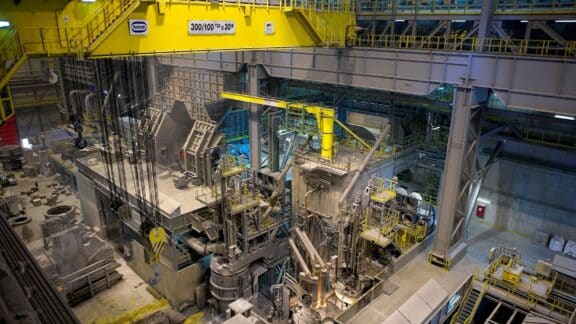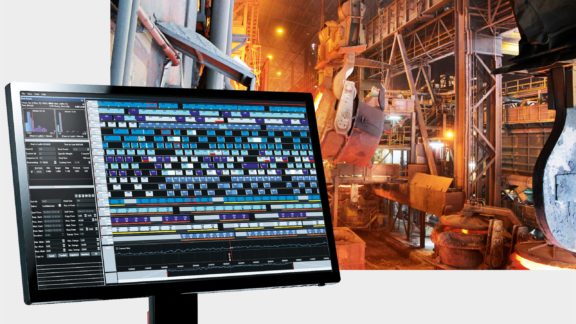The digital transformation in the global steel industry is well underway. With dynamic process control systems available for every aspect of the production chain, fully automated steelmaking will soon transform steel production, making it safer and more reliable.
As the world embraces digital technologies, the steel industry is no different. The digital transformation has begun, and steel producers are pressed to remain competitive while upgrading and implementing new automation systems in their production units. Digital units mean increased profitability, high-quality products, and a safer and more reliable production process. However, as the benefits are innumerable, producers must ask how to close the gap between current operations and a fully automated future.
The Big Picture for Automation
Today, digital tools cover all aggregates, equipment, treatment steps, end products, and the related services and repairs necessary to keep a plant operational. Although several industries have been able to embrace digital production quickly, the steel industry faces the realities of an immensely complex production process. Changes in raw materials, processes, and factors along the entire value chain combined with questions regarding plant logistics mean that a “one-size fits” solution is out of the question. Instead, applying current Level 1 automation systems, reliable production databases, and process optimization and planning tools can help manage scheduling, improve performance, and aid in the modernization and maintenance of new systems.
FLEXIBLE FOUNDATIONS
One of the most fundamental yet underestimated areas for improvement in steel production is Level 1 automation. Although these are “basic” automation systems, they enable several advanced functionalities, including digital assistance tools and smart sensors. These state-of-the-art systems include hard-wired components and human-machine interfaces for the direct operation and visualization of process feedback. These hard-wired systems, or programmable logic controllers, continue to serve essential primary control and safety-related functions. As these systems continue to become more flexible, implementing a basic automation system without a vision for the future can limit the optimization of more sophisticated or additional automation systems down the line. Thus, the ideal Level 1 automation system allows maximum flexibility and works well with higher-level process optimization systems.
In the best-case scenario, a Level 1 automation system will facilitate the transformation of a meltshop into a fully automated production unit. For example, in BOF steelmaking, the oxygen lance is essential to the production process, impacting decarburization and slag formation in the converter. A Level 1 automation system for BOF steelmaking is able to execute a dynamic oxygen blowing pattern according to lance height and gas flow. Automated control of the oxygen lance minimizes slopping severity using acoustic sensors, and process optimization systems adjust decarburization rates for varying operational conditions. However, controlling oxygen blowing by higher-level optimization systems requires a flexible Level 1 automation system.
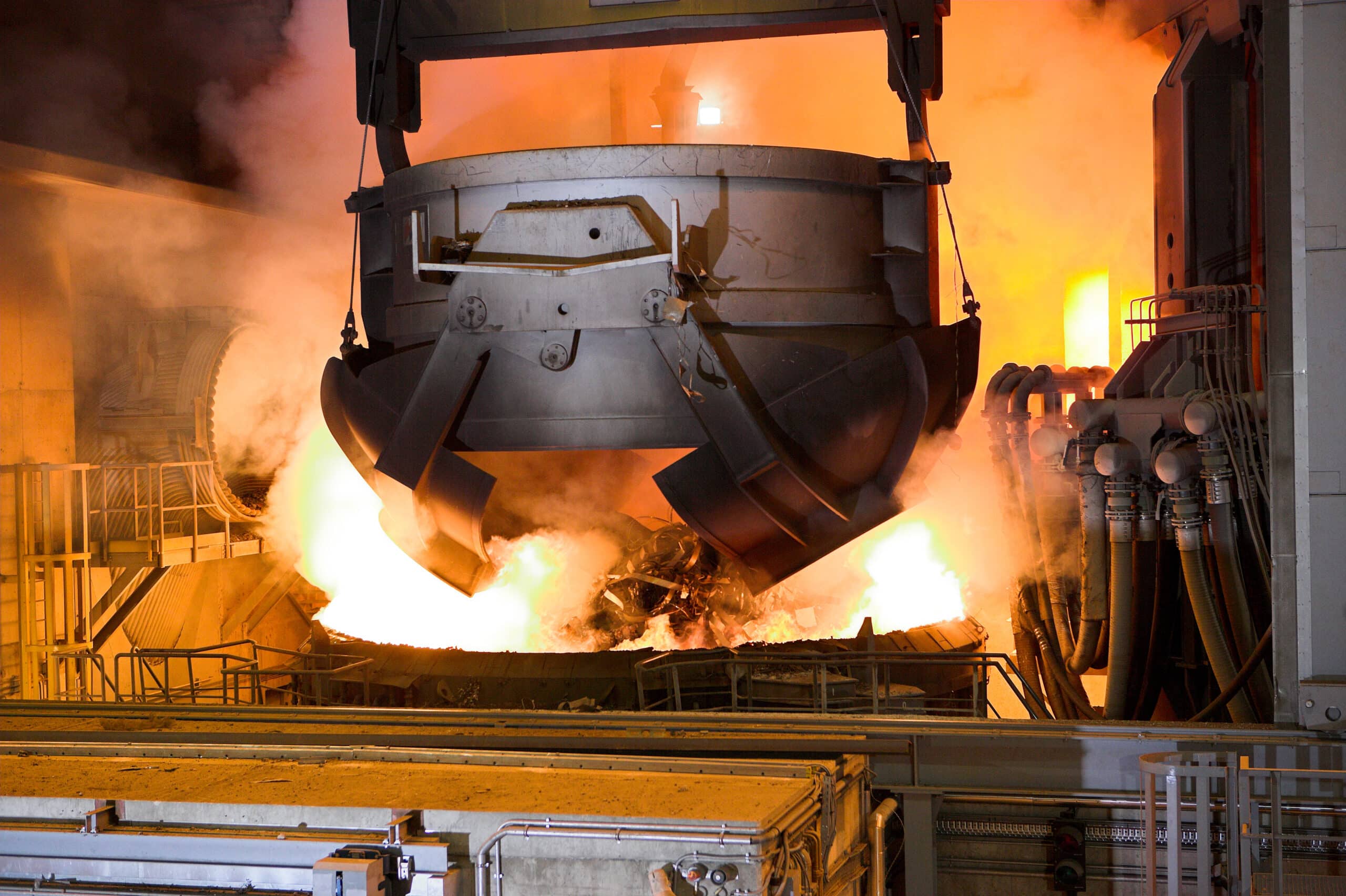
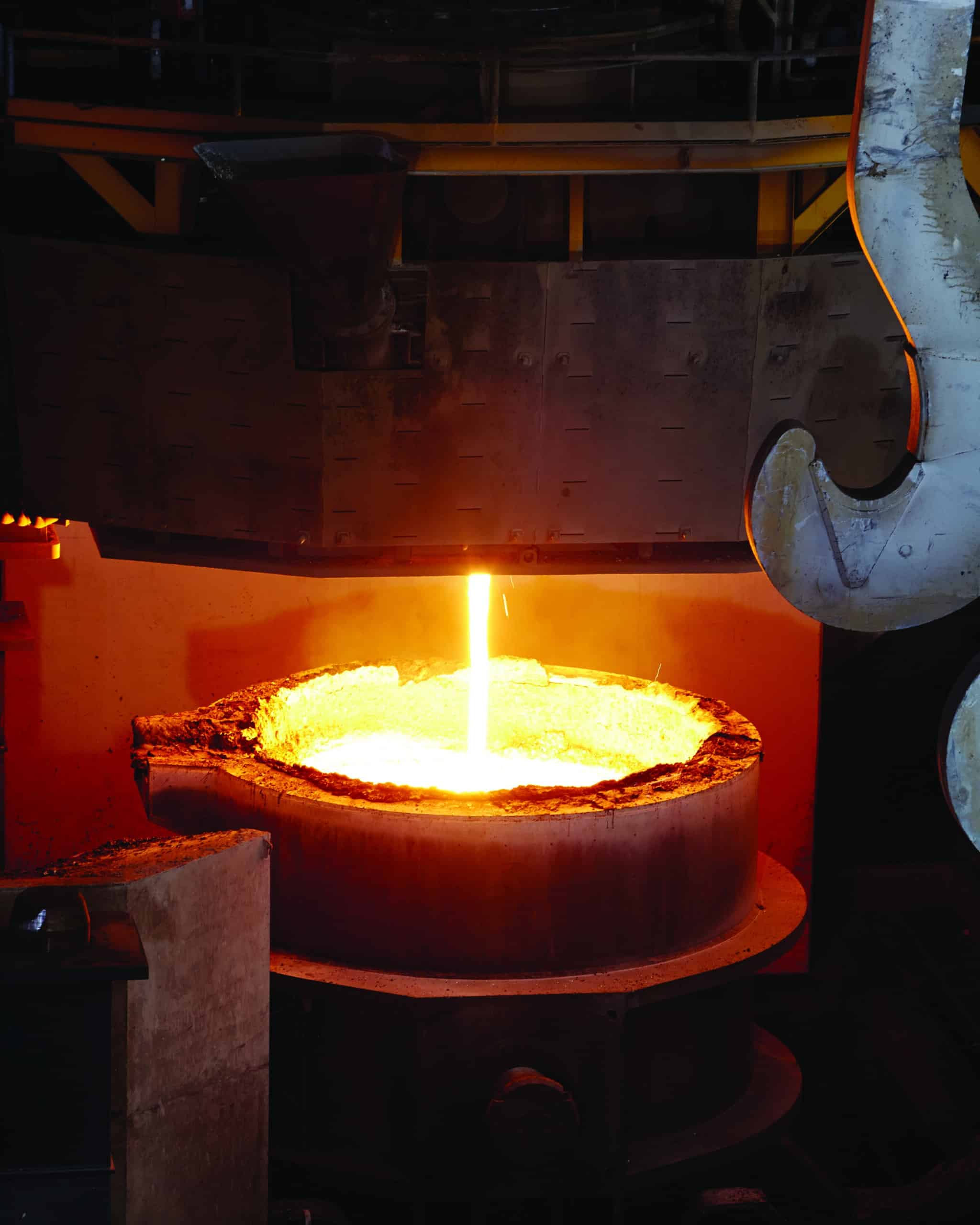
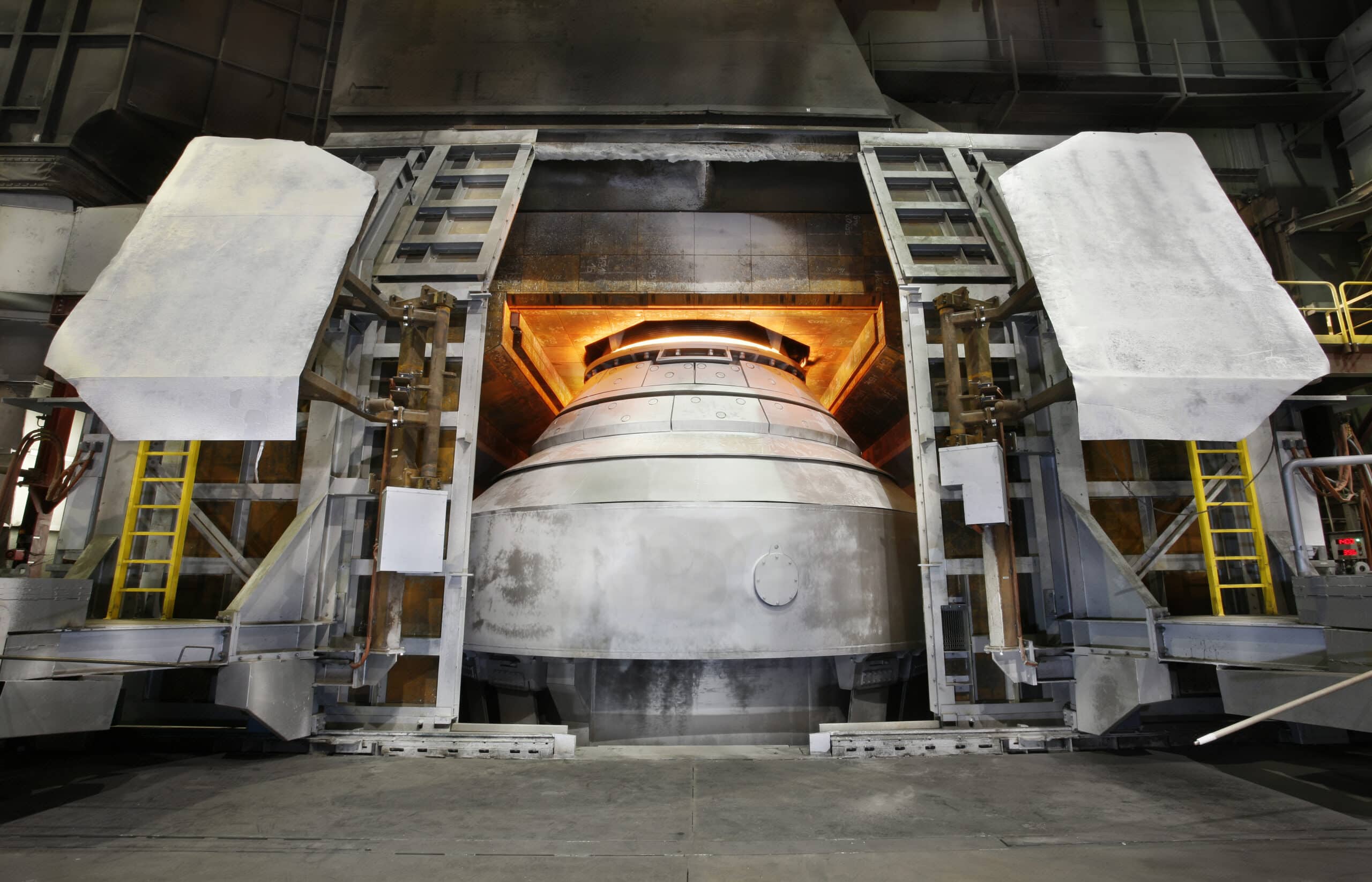
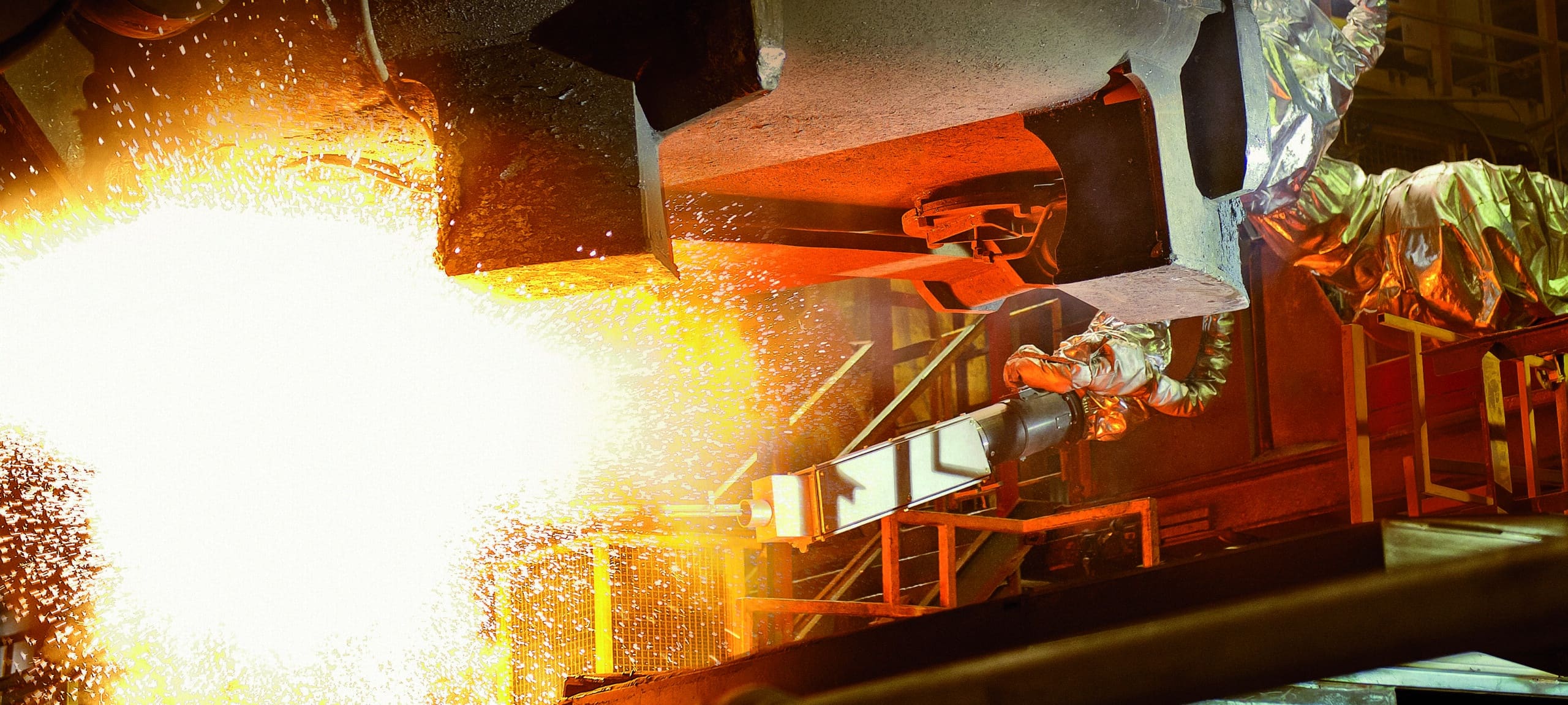
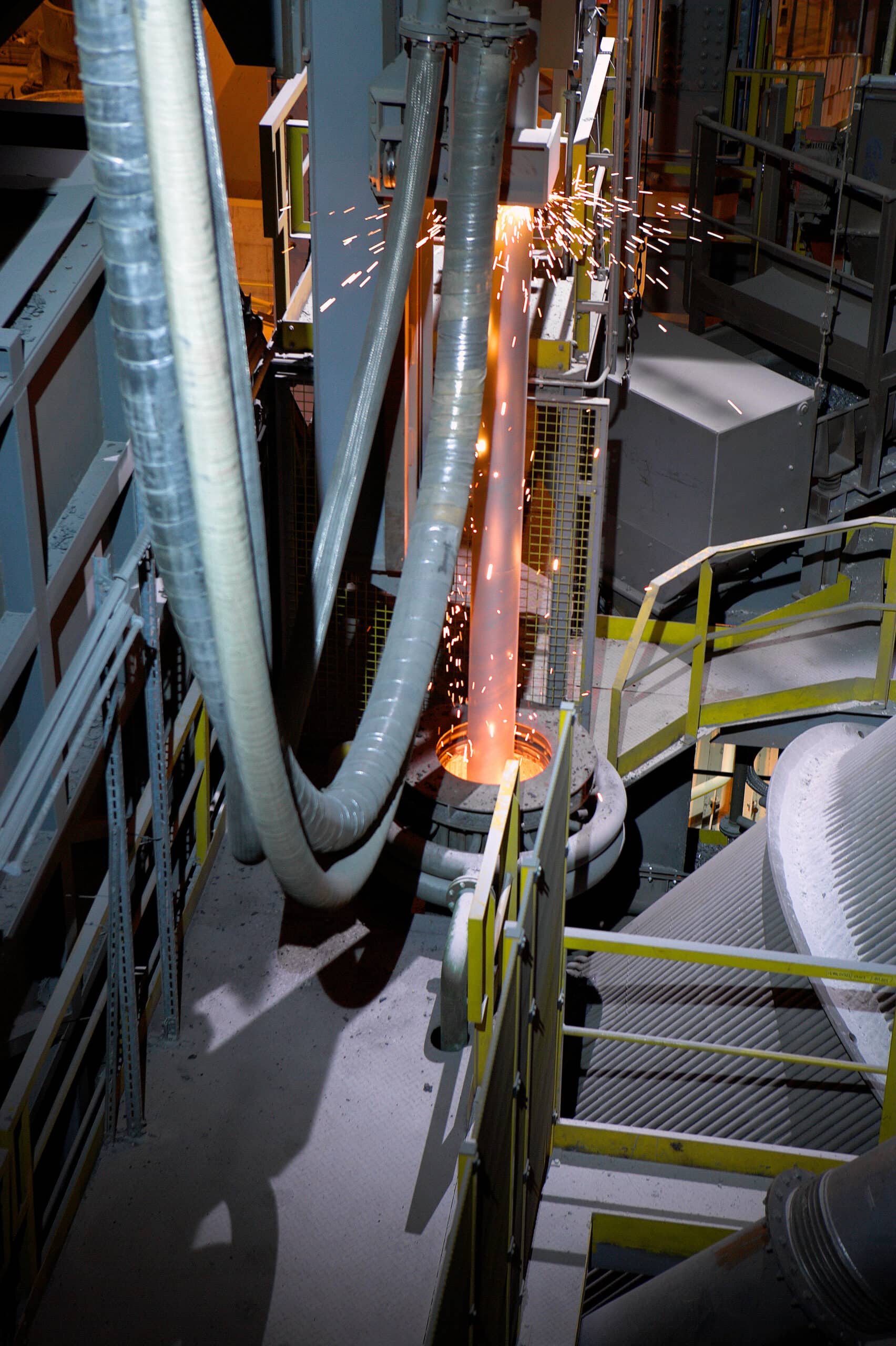
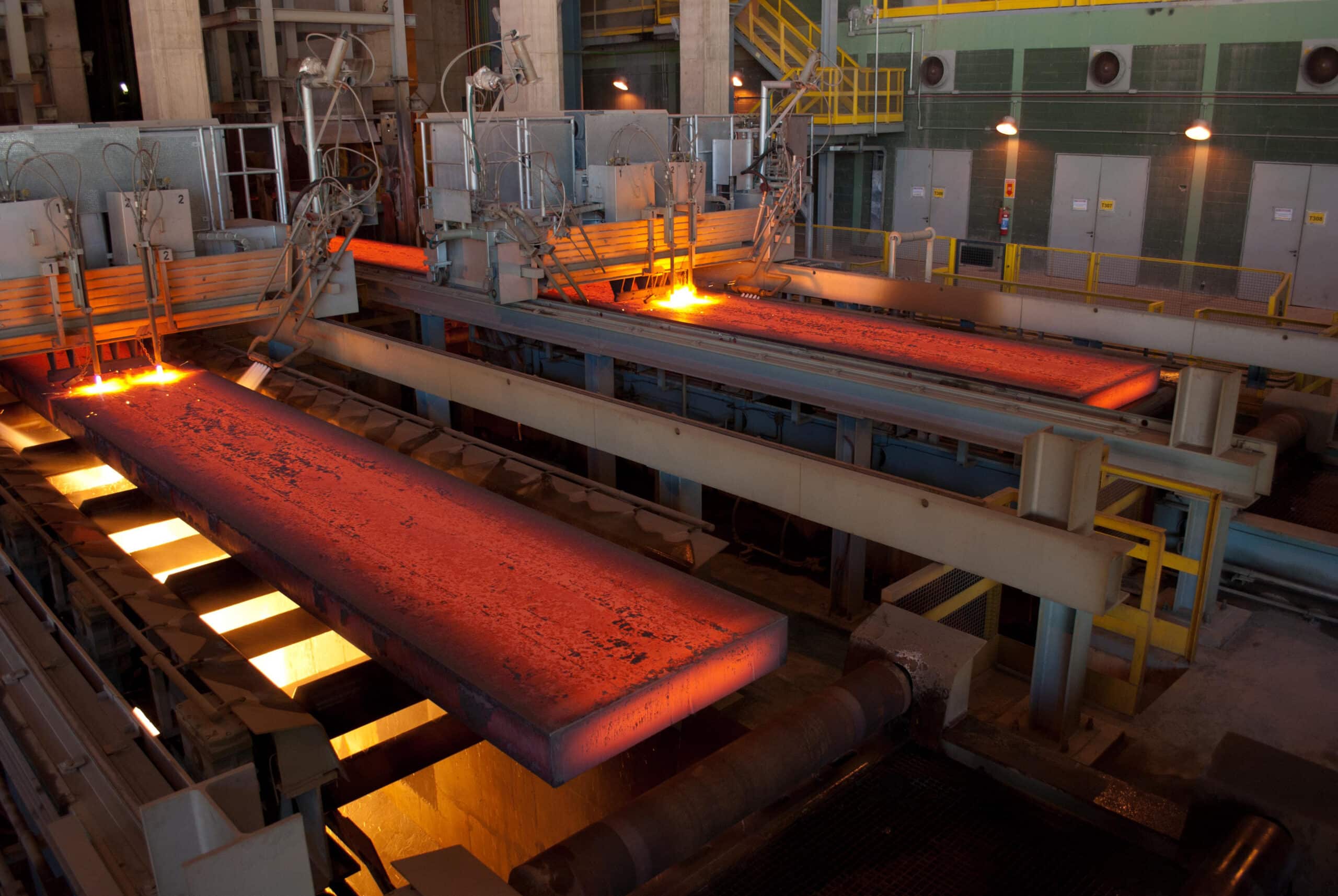
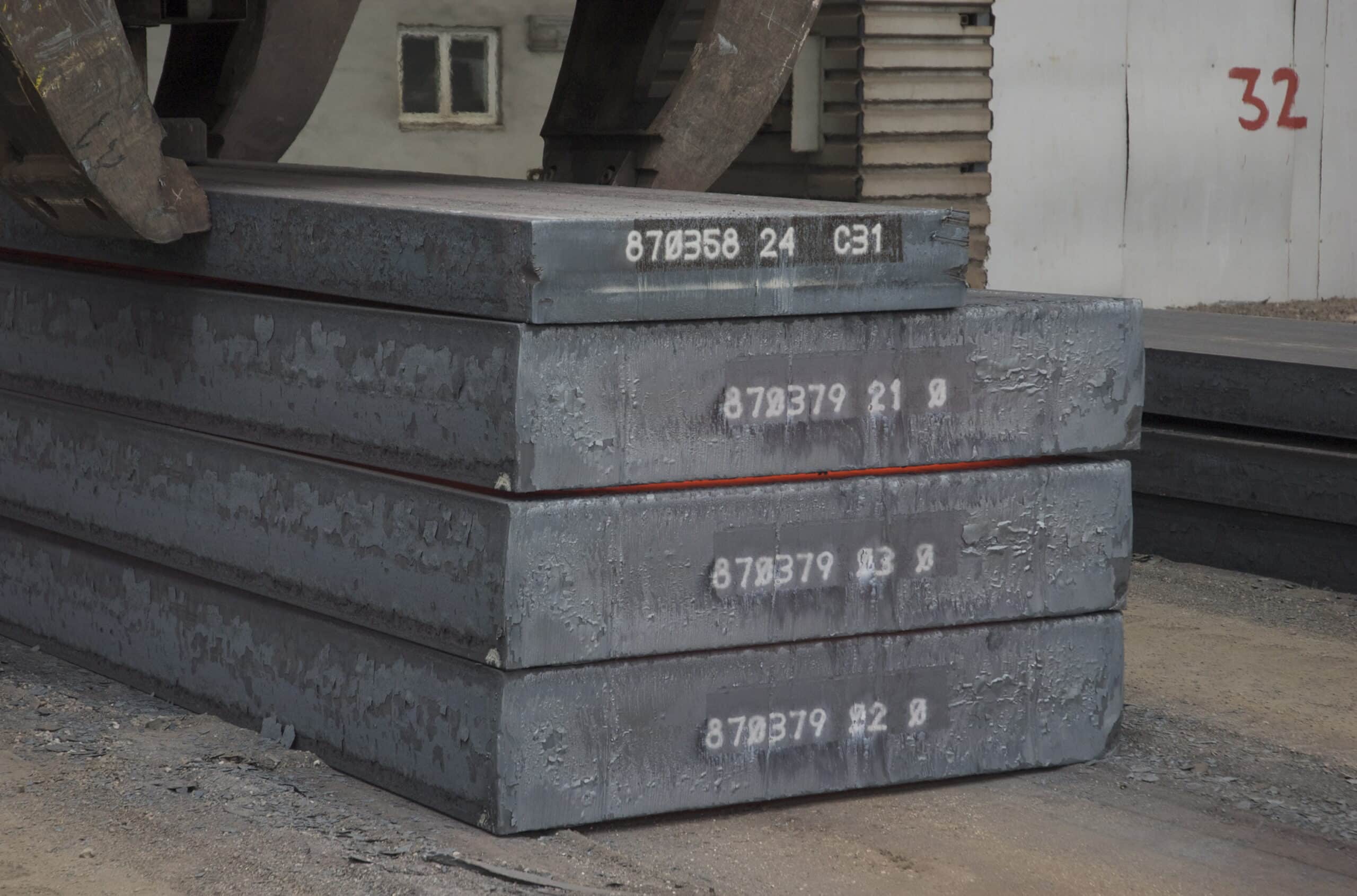
With a flexible Level 1 automation system, a Level 2 process optimization system incorporates real-time feedback for height and valve stand flow to improve prediction accuracy for decarburization rates. From higher-level control systems back to basic automation systems, the blowing time and pattern are adjusted using the actual real-time values, reducing reblows, and improving performance in a “closed-loop.” By applying Level 1 automation to one aspect of the BOF steelmaking process, the overall productivity of the steel plant is improved. Using a Level 1 automation system with an optimization tool maintains meltshop efficiency, optimizing equipment availability, and interfacing with higher-level control systems. Yet, this requires foresight as steel producers plan their modernization strategies in advance, and Level 1 automation systems are just the first step toward digitalization.
OPTIMIZE, PLAN, AND MANAGE
Continuing on the road toward fully automated steelmaking, comprehensive data solutions, from the BOF to the caster, continue to prove themselves repeatedly. Especially in steel production, planning tools ensure optimal timing along the entire value chain. Based on ideal timing and temperature profiles, steel producers can use planning and process optimization tools to create optimal production schedules.
Process optimization tools provide insights and additional knowledge regarding a steel plant’s operations. Combined with Level 1 automation systems, these Level 2 tools can make real-time adjustments to the production process, like adjustments in primary and secondary steelmaking. However, the effectiveness of a process optimization tool is only as good as its ability to continuously collect new and relevant data. Steel producers must think about their digital future to fully benefit from the predictions and adjustments these big data tools generate. These tools can provide deeper insights for automatic process tuning when applied correctly. More historical and real-time data input will make models and predictions increasingly accurate. However, the most considerable drawback is managing the huge amount of data itself.
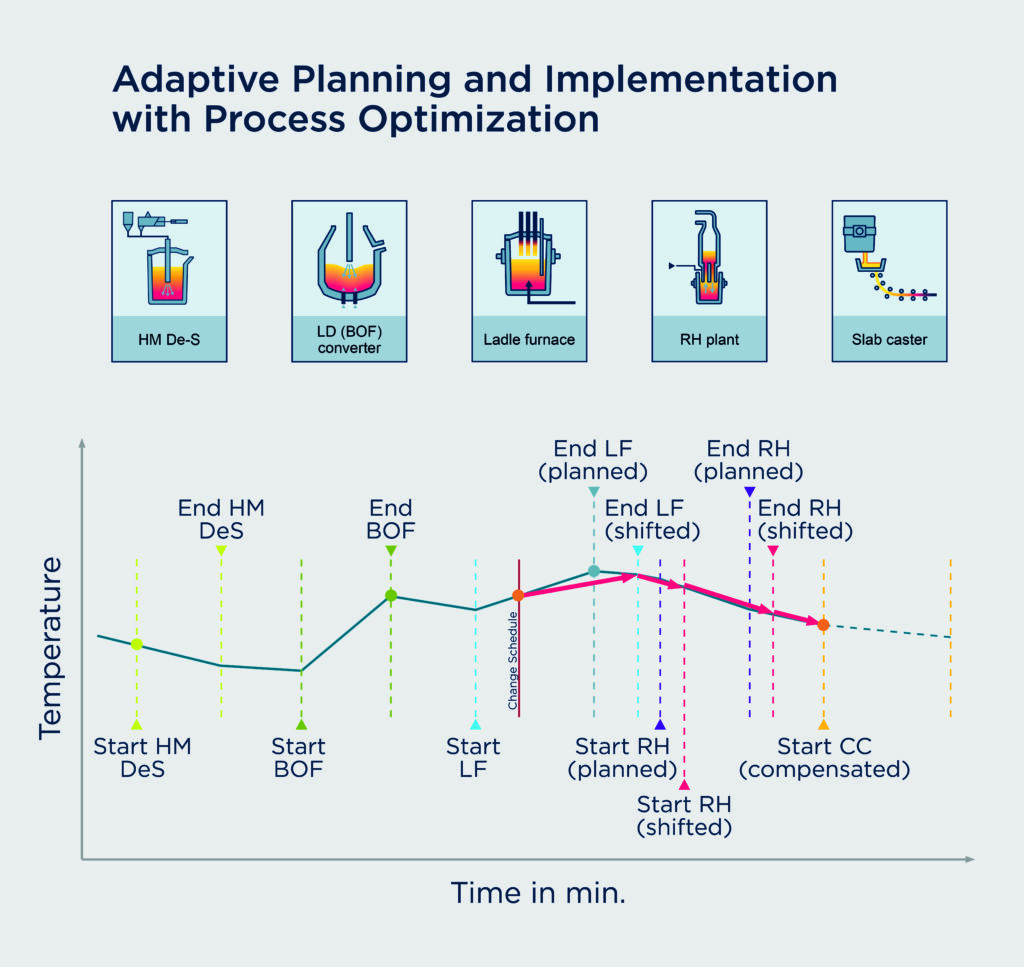
BIG DATA FOR A COMPLEX INDUSTRY
Steelmaking is one of the most complex processes to model because of its discrete steps and varying factors. It stands to reason that the corresponding data sets are often exceedingly complex, asynchronous, and multi-dimensional. Thankfully, the latest software developments and tools can provide trends, tables, statistics, and graphs with minimal effort. Content can be produced and tailored to various users. Since the data is collected in one common database, it is also less likely that there will be redundant data sets skewing reports and scorecards.
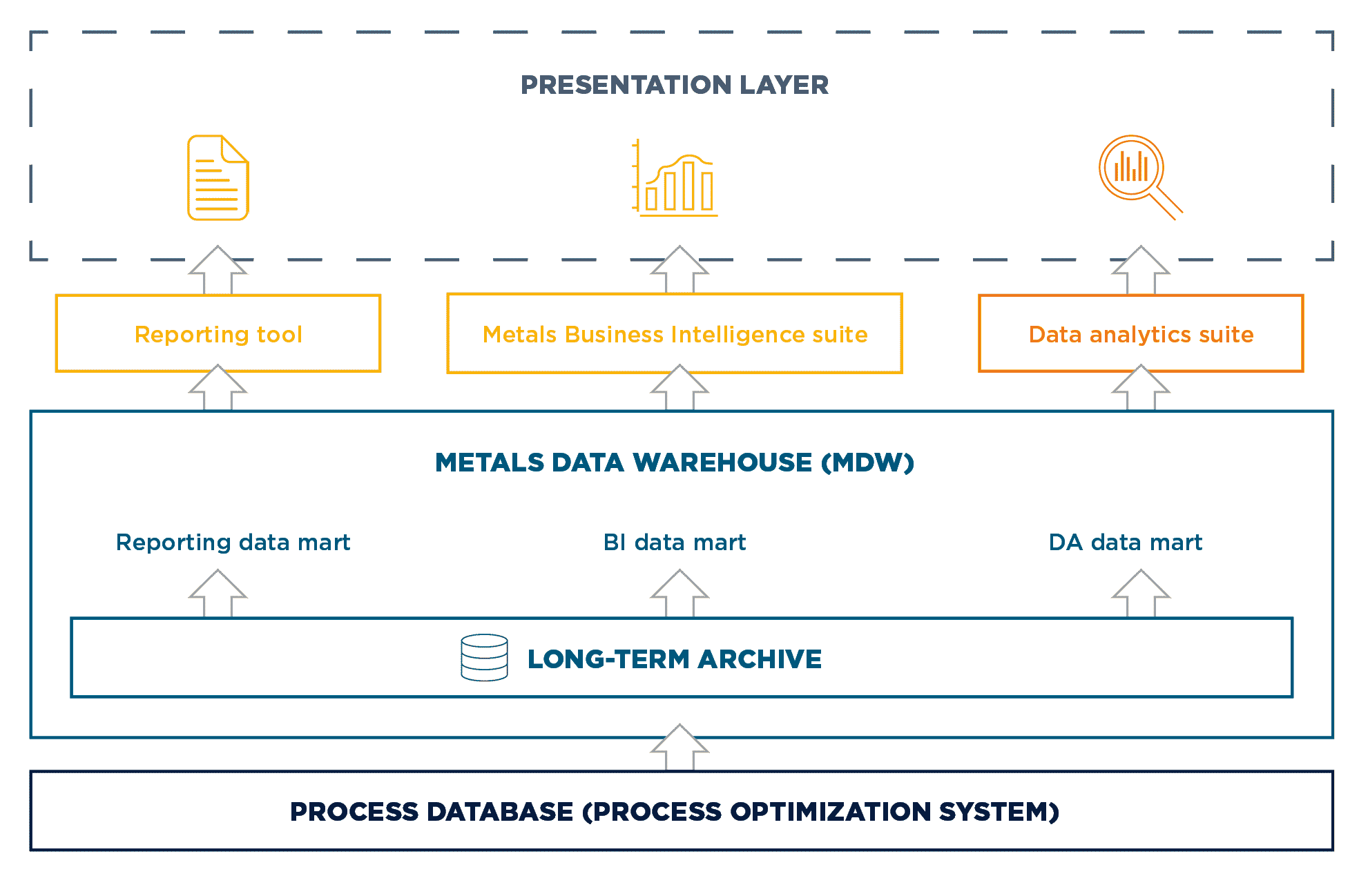
All these advances in data management, planning, and process optimization help to realize the full potential of a steel plant. Comprehensive tools, including a production planning system, take care of complex heat scheduling, optimizing availability, scheduling for parallel aggregates, and ensuring limited downtime related to required maintenance tasks. Next-generation condition monitoring are also making a major contribution by predicting equipment status. Process optimization tools will also interact with base automation systems to adjust settings in real-time, ensuring consistent high-quality production.
LOGICAL AUTOMATION: PLANT LOGISTICS
While all aspects of the meltshop that can be automated to optimize production, one place for increased improvement involves material handling and tracking within the meltshop and beyond (For more information on ladle tracking in the meltshop read Ladle Tracking Solutions: Beyond Positioning). From ladle transportation of liquid hot metal and scrap chutes in the meltshop to the transport and storage of slabs, plant logistics automation could improve plant availability and reveal previously unknown bottlenecks. Sometimes, they can even make immediate adjustments to overcome inefficiencies.
Taking a closer look at transportation logistics within the meltshop, automating crane transportation is one important step toward automated steelmaking. Crane automation design is a safety-relevant and complex field regarding digital transformation due to different national standards and the need to anticipate errors. Fortunately, only a few factors are hindering automated system’s immediate integration to improve crane safety and increase availability.
THE ROADMAP TO FULLY AUTOMATED STEELMAKING
While the digital transformation of steel production appears straightforward, the road to fully automated steelmaking is often winding. Steel producers must consider day-to-day operations and a modernization plan to limit shutdown time. Projects that focus on more extensive modernization, such as BOF vessel replacement, can present an opportunity to implement automation upgrades, especially those that prepare base automation systems for future process optimization and digital tools. A flexible foundation is essential to implementing an effective optimization tool further down the road.
The future of fully automated steelmaking in the meltshop is not without the human element and will involve personnel for supervision and maintenance. While the work may change, it will transform frequent, repetitive, and hazardous tasks into such that can be controlled and operated by machines, meaning a safer steel plant overall. For example, a one-person-supervised ladle furnace can already be realized with available technologies, significantly improving safety in this area. Other infrequent tasks, such as relining, equipment replacement, and processes that require deep metallurgical knowledge, will continue to necessitate the expertise of human operators. It is the future of automated steelmaking, where man and machine work together to produce high-quality end products with increased reliability and safety.
